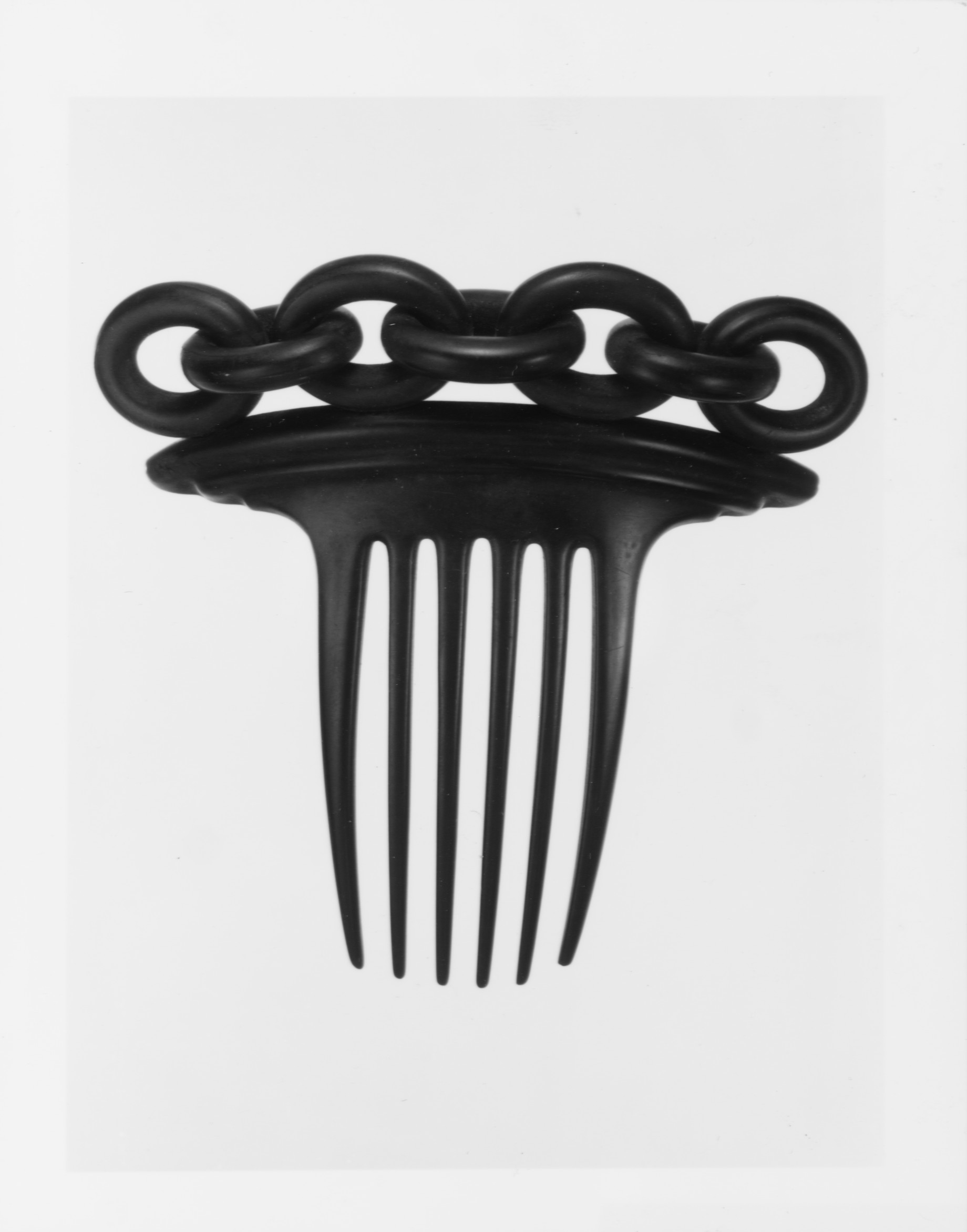Hair Comb
Manufactured by India Rubber Comb Company
Patented by Charles Goodyear
Among the objects recovered at the Seneca Village site was a small hair comb molded from Malaysian gutta-percha resin. Both the Seneca Village comb and this ornate vulcanite display piece, made from rubber harvested in West Africa, were products of a nineteenth-century colonial robber economy in which manufacturers exploited natural materials and Indigenous labor in the European colonies. In the Unites States, where such finished objects were bought and sold, the 1850 passage of the Fugitive Slave Act meant that many free or self-emancipated Black New Yorkers were again in danger of kidnapping and enslavement. This comb's border in the shape of a short link chain powerfully resonates with this painful history of bondage.
Due to rights restrictions, this image cannot be enlarged, viewed at full screen, or downloaded.
This artwork is meant to be viewed from right to left. Scroll left to view more.



